It is a preeminent collection of the art of the twentieth century—perhaps the only one. From Marcel Duchamp to Andreas Baader and Jeff Koons, it covers almost a hundred years of cultural history, an era that has become strange to us. In the collection’s 154 items we espy glimpses of a universe of things and ideas, the forms in which that era expressed its feelings and thinking, its knowledge and visions: they are art objects and visual creations that people collectively beheld, considered, and judged.
Es ist eine der herausragenden Sammlungen der Kunst des 20. Jahrhunderts – vielleicht die Einzige. Von Marcel Duchamp über Andreas Baader bis zu Jeff Koons umspannt sie fast 100 Jahre einer Kulturepoche, die uns fremd geworden ist. Die 154 Sammlungsstücke geben Einblick in die Ding- und Begriffswelt einer Ära, in der sich einst Gefühle und Gedanken, Wissen und Visionen in Formen ausdrückten: in künstlerischen Objekten und Bildwerken, die kollektiv betrachtet und bewertet wurden.
Today it takes a keen archaeological intuition to grasp how it was possible that special significance was accorded to selected objects identified as works of art. And so the exhibition at KOW is first and foremost a tribute to the life’s work of Ramon Haze. He compiled the items on display and reconstructed their forgotten meaning. His art collection—“The Cabinet”—traces several key episodes in the past evolution of art and is now regarded as the single most important source helping us to understand it.
Nine “Fountains” by Marcel Duchamp are the highlight in the exhibition. During a trip to Dresden in 1912, the French artist purchased ten urinals. He initially put nine of them in storage in Dresden, while one accompanied him to New York, where he tried and failed to place it in an exhibition. His piss pot, the jury wrote, was not even art. It took Duchamp a long time to win his critics over—and when he did, it was too late to finally present the other nine “Fountains.” The political situation put his storage room in Dresden beyond reach. But when the East German government tried to turn the objects into hard cash on the capitalist art market without his authorization, Duchamp beat the communists to it. In 1964, he manufactured eight replicas of the “Foundation” and sold them through his gallery. Art in the twentieth century, it seems, was always also an ideological and economic contest. In 1998, Haze unearthed the nine original urinals in a basement in Dresden. They are now in the Cabinet.
“Saltpeter” (1970–72), a set of sculptures by Andreas Baader, exemplifies what political art can be. The ten electric coffee grinders in zinc buckets demonstrate the dangers of radical artists’ collectives such as Baader’s own RAF. Residues of explosives on the coffee grinders are evidence that the work was used to make bombs. But the volatile ensemble also articulates an ironic take on the RAF’s self-dramatization as a collective political bomb, underlining the self-destructive impulse at the heart of the group’s collaborative actions, which revived the Romantic tradition of unrecognized artistic genius in a theatrical gesture of grand failure. Unlike Baader, jeff Koons strove after fame and fortune, but in vain. Conservation of the water tanks in which two floating balls registered the minutest vibrations in the surroundings proved to be so complex that Koons’s works gradually disappeared from collections and fell into disrepair.
Heute indes braucht es archäologischen Feinsinn um nachvollziehen zu können, wie es möglich war, dass manche Gegenstände Bedeutung als Kunstwerke erlangten und andere nicht. Und so ist die Ausstellung bei KOW vor allem eine Würdigung des Lebenswerks von Ramon Haze, der die Exponate dieser Kollektion zusammentrug und ihren verschollenen Sinn rekonstruierte. Seine Kunstsammlung – „Der Schrank“ – zeichnet einige Schlüsselepisoden der vergangenen Kunstentwicklung nach und gilt als wichtigste Quelle zu deren Verständnis.
Glanzstück der Ausstellung sind neun „Fountains“ von Marcel Duchamp. Sie machen deutlich, dass Kunst im 20. Jahrhundert ein Kampf um Begriffe und Ideologien, um Ressourcen und um Geld war. Duchamp erstand 1912 während einer Dresdenreise zehn Urinale, von denen er neun zunächst in Dresden einlagerte. Eines nahm er mit nach New York und bewarb sich damit erfolglos für eine Ausstellung. Sein Pissoir, so die Jury, sei gar keine Kunst. Es dauerte lange, bis Duchamp seine Kritiker umstimmen konnte – zu lange jedoch, um endlich auch die anderen neun „Fountains“ zu präsentieren, denn sein Dresdner Depot blieb ihm nun aus politischen Gründen verschlossen. Als dann die DDR-Regierung die Objekte eigenmächtig auf dem kapitalistischen Kunstmarkt veräußern wollte, kam der Franzose den Kommunisten zuvor. 1964 fertigte er acht Repliken der „Fountain“ und vertrieb sie über seine Galerie. 1998 schließlich fand Ramon Haze die neun Ur-Urinale in einem Dresdner Keller. Heute befinden sie sich im Schrank.
Die Skulpturengruppe „Salpeter“ (1970–72) von Andreas Baader steht beispielhaft für eine politische Kunst. Die zehn elektrischen Kaffeemühlen in Zinkeimern demonstrieren das Gefahrenpotenzial radikaler Künstlerkollektive wie der RAF, der Baader selbst angehörte. Sprengstoffreste an den Kaffeemühlen belegen, dass die Arbeit zum Bombenbau verwendet wurde. Doch das explosive Eimer-Ensemble ironisiert auch die Selbststilisierung der RAF als kollektiver Sprengkörper und unterstreicht den autodestruktiven Ansatz der Gemeinschaftsaktionen, in denen die romantische Tradition verkannter Künstlergenies als inszeniertes Scheitern fortlebte. Anders Jeff Koons: er suchte Ruhm und Erfolg, blieb aber glücklos. Die Pflege seiner Wassertanks, in denen zwei schwimmende Bälle selbst feinste Schwingungen der Umwelt registrierten, erwies sich als so kompliziert, dass Koons Werke allmählich aus den Sammlungen verschwanden und verwahrlosten.
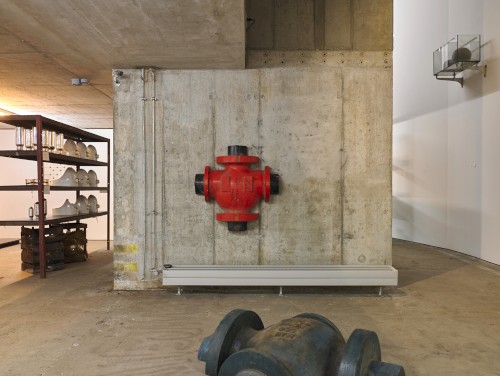
Closer study of the Cabinet reveals that the art of the twentieth and even the early twenty-first century drew virtually no distinction between the real and complete fabrication. People took license with the boundary between fiction and truth. Haze himself sometimes wandered off the solid ground of reality, closing his ears to some facts or even deliberately concealing them. He never disclosed many of his sources and downplayed the contributions of others; his assistants Holmer Feldmann and Andreas Grahl, for example, procured easily a hundred percent of his collection’s inventory while also creating one of the most remarkable works of art of the bygone cultural era even as the latter was in its last throes. Haze studiously avoided correctly specifying Grahl’s and Feldmann’s achievements, an omission we will seek to rectify in the following.
Leipzig, 1996, seven years after the fall of the Wall: the East German production of industrial, consumer, and cultural goods is no longer, and the things and ideas that furnished the world of socialism are passé. The end of an era. Rummaging through vacant apartments and shuttered factories, Holmer Feldmann and Andreas Grahl amass truckloads of urinals, toys, eggcups, glass flasks, and other finds. Following Haze’s instructions, they assemble them in an extraordinary installation: the Cabinet. They study and refine Duchamp’s recipe on how to alter the semantics of mundane objects and transform their huge pile of waste material into a gallery of modern and contemporary art. The citizens of Leipzig soon flock to the collection display at its prominent downtown location and are filled with the characteristic confusion of the post-socialist period: So what is important, what is true, and what is not? And why?
Beim weiteren Studium des Schranks wird deutlich, dass die Kunst des 20. und auch noch der frühen 21. Jahrhunderts zwischen Realem und frei Erfundenem kaum unterschied. Die Grenzen zwischen Fiktion und Wahrheit nahm man nicht so genau. Auch Haze blieb nicht immer auf dem Boden der Tatsachen, war für manche Fakten taub oder verschwieg sie gar. Er legte längst nicht alle seine Quellen offen und spielte unter anderem die Bedeutung seiner Assistenten Holmer Feldmann und Andreas Grahl herunter, die gut hundert Prozent des Sammlungsinventars besorgten und dabei selbst eines der bemerkenswertesten Kunstwerke der vergangenen Kulturepoche schufen, während die schon in letzten Atemzügen lag. Haze unterließ es indes geflissentlich, Grahls und Feldmanns Leistung korrekt zu beschreiben. Das soll hier nachgeholt werden.
Leipzig 1996, sieben Jahre nach Mauerfall: Die Industrie-, Konsum- und Kulturgüterproduktion der DDR ist Vergangenheit, die Ding- und Begriffswelt des Sozialismus passé. Ende einer Ära. Holmer Feldmann und Andreas Grahl tragen aus leerstehenden Wohnungen und stillgelegten Fabriken lastwagenweise Urinale, Spielzeug, Eierbecher, Glaskolben und weitere Fundobjekte zusammen, die sie nach Hazes Anweisungen auf hunderten Quadratmetern zu einer außergewöhnlichen Installation zusammenfügen: dem Schrank. Sie studieren und verfeinern Duchamps Rezeptur zur semantischen Transformation von Alltagsgegenständen und verwandeln ihr gewaltiges Altstofflager in eine Pinakothek der modernen und zeitgenössischen Kunst. Mitten in der Stadt geben sich bald die Leipziger am Eingang zur Sammlungsausstellung die Klinke in die Hand und sind so verwirrt wie die postsozialistischen Zeiten selbst: Was ist denn nun wichtig und richtig? Was nicht? Und warum?
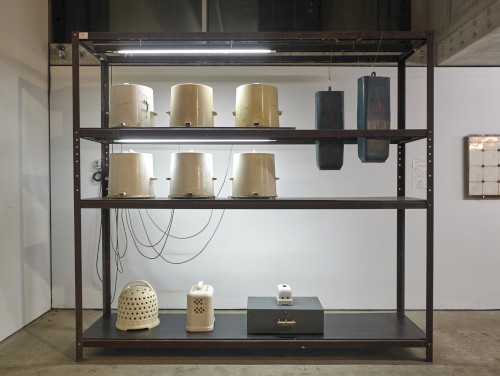
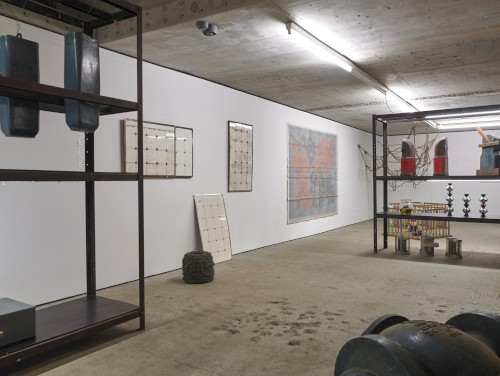
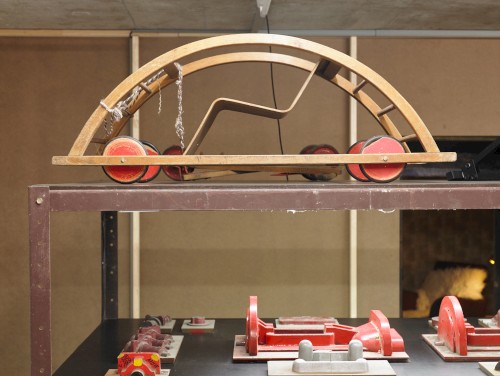
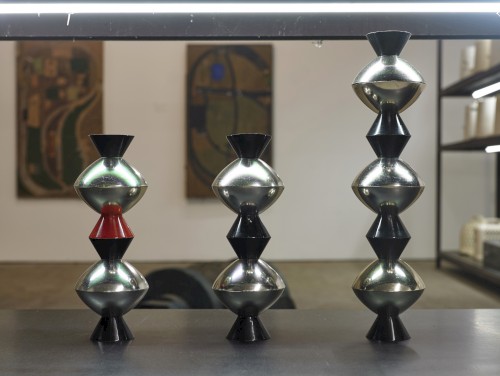
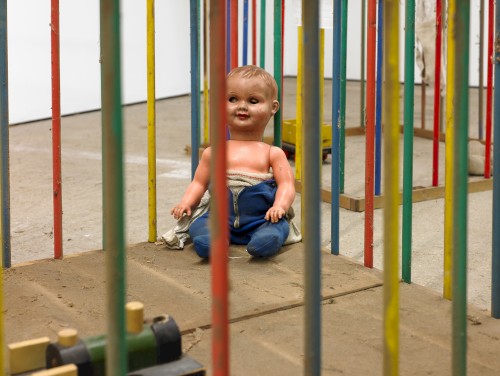

Haze’s collection has fallen into oblivion, as has the twentieth century as a cultural era in the account it gave of itself.
Hazes Sammlung ist heute so vergessen wie die Kulturepoche des 20. Jahrhunderts in dessen eigener Erzählung.
Was Ferdinand Porsche's original VW Beetle, designed in 1934, art? What about Ruth Tauer's tiles? And the sugar furnaces of Pippip, who was born in Chicago in 1890 and worked as a stoker on a cargo steamer? What sets the Colombian gallardo Juan Ibanez's playpen apart from an identical playpen by the Russian Ilya Kabakov (salvaged by Feldmann and Grahl from Kabakov’s installation “Voices behind the Door,” which was shown in Leipzig in 1996 and then scrapped)? And why did art historians for decades draw a veil of silence over Edward Baranow-Knepp's “Machine for Changing the World for the Better,” which was probably completed as early as the 1930s?
Who might be able to answer all these questions? Feldmann, Grahl, and Haze write their own version of art history at a time when the Western sense of inevitability muffles all life in the East—and play a trick on the new hegemonic style.By sheer luck, we have a video recording of a guided tour of the collection. It documents the remarkable precision and attention to detail with which the pedagogical staff showing the cabinet conveyed Ramon Haze’s artful account of the past and pinpointed the change of values in the years after German reunification. Crucially, they did so without stoking resentments, clinging to anachronistic oppositions, or promoting fatuous conceptions of the artist’s role of the kind that would be advertised by some of the other art coming out of Leipzig. From 1996 until 1999, the art collection “Der Schrank von Ramon Haze” was probably one of the most original and substantial creative responses to the post-socialist transformation, to the revision of (art-)historical narratives and the new acquisitions policies of public museums. The latter, it should be noted, have so far not deigned to include the Cabinet in their presentations. Haze’s collection has fallen into oblivion, as has the twentieth century as a cultural era in the account it gave of itself.
Meanwhile, parts of the collection—which is now a historic artifact in its own right—survived in basements and barns in Thuringia. In 2009, we asked Holmer Feldmann and Andreas Grahl to wipe the straw off several incunables from Haze’s collection and presented them as part of KOW’s inaugural exhibition, ANTIREPRESENTATIONALISM. We have now invited Feldmann and Grahl to reassemble what is left of the Cabinet. We should add that Ramon Haze had additional collaborators: his fellow collector Pjotr Baran; Xenia Helms, Joe Kuss, Jan Wenzel, and Valentin Wetzel, who penned the outrageous descriptions of individual works (on which we drew for this press release); Markus Dreßen, who created the sumptuous design for Haze’s award-winning collection catalogue, now a rarity, and published it at Spector Books; and many, many others. Welcome to the Cabinet!
Text: Alexander Koch / Translation: Gerrit Jackson / Photos: Ladislav Zajac
War denn FERDINAND PORSCHES Käfer-Urmodell von 1934 Kunst? Wie steht es mit den Fliesen RUTH TAUERS? Den Zuckeröfen des 1890 in Chicago geborenen PIPPIP, Heizer auf einem Transportdampfer? Was unterscheidet den Kinderlaufstall des Kolumbianers GALLARDO JUAN IBANEZ von dem gleichen Kinderlaufstall des Russen ILYA KABAKOV (den Feldmann und Grahl aus der Kabakov-Installation „Stimmen hinter der Tür“ sicherstellten, die 1996 in Leipzig gezeigt und danach zerstört wurde)? Und warum wurde „Die Maschine zur Veränderung der Welt zum Guten hin“, vermutlich schon in den 1930er Jahren von EDWARD BARANOW-KNEPP fertiggestellt, so lange von Kunsthistorikern unterschlagen? Wer soll das alles beantworten? Feldmann, Grahl und Haze schreiben ihre eigene Version der Kunstgeschichte zu einer Zeit, als sich die westliche Alternativlosigkeit wie Mehltau über den Osten legt – und schlagen dem neuen hegemonialen Duktus ein Schnippchen.
Durch Zufall blieb die Videoaufzeichnung einer Führung durch die Sammlung erhalten. Sie überliefert, mit welch bemerkenswerter Detailschärfe das pädagogische Personal im Schrank Ramon Hazes kunstvolle Beschreibung der Vergangenheit vermittelte und dabei den Wertewandel der Nachwendezeit auf den Punkt brachte. Ohne – und das ist wichtig – Ressentiments zu schüren oder anachronistische Oppositionen und verklebte Künstlerrollenbilder zu vertreten, wie es dann manch andere Kunst aus Leipzig tat. Zwischen 1996 und 1999 war die Kunstsammlung „Der Schrank von Ramon Haze“ wohl eine der originellsten und substantiellsten künstlerischen Reaktionen auf den postsozialistischen Epochenumschwung, auf die Revision (kunst-)historischer Narrative und die neue Sammlungspolitik staatlicher Museen. Letztere nahmen übrigens den Schrank bislang nicht in ihr Mobiliar auf. Hazes Sammlung ist heute so vergessen wie die Kulturepoche des 20. Jahrhunderts in dessen eigener Erzählung.
Teile dieser nun selbst historisch gewordenen Kollektion überlebten unterdessen in thüringischen Kellern und Scheunen. 2009 hatten wir mit Holmer Feldmann und Andreas Grahl bereits einige Inkunabeln der Hazeschen Sammlung aus dem Stroh gezogen und zeigten sie in der Eröffnungsausstellung von KOW, ANTIREPRESENTATIONALISM. Nun luden wir Feldmann und Grahl ein, noch einmal zusammenzutragen, was vom Schrank übrig blieb. Dem muss hinzugefügt werden, dass Ramon Haze weitere Kollaborateure hatte: den Sammlerkollegen Pjotr Baran; Xenia Helms, Joe Kuss, Jan Wenzel und Valentin Wetzel, die die unerhörten Werkbeschreibungen verfassten (auf denen auch dieser Text aufbaut); Markus Dreßen, der Hazes preisgekrönten und heute rar gewordenen Sammlungskatalog aufwändig gestaltete und bei Spector Books herausgab; und viele viele mehr. Willkommen im Schrank!
Text: Alexander Koch / Fotos: Ladislav Zajac

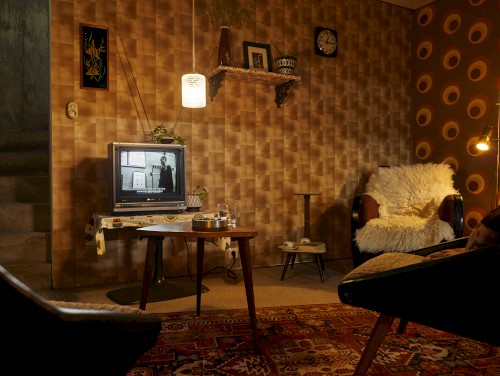
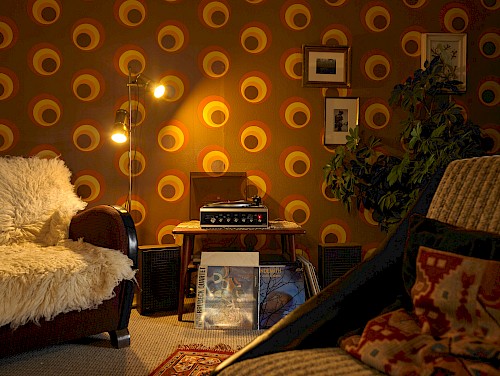

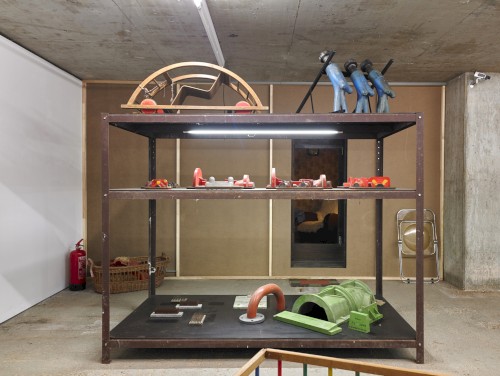
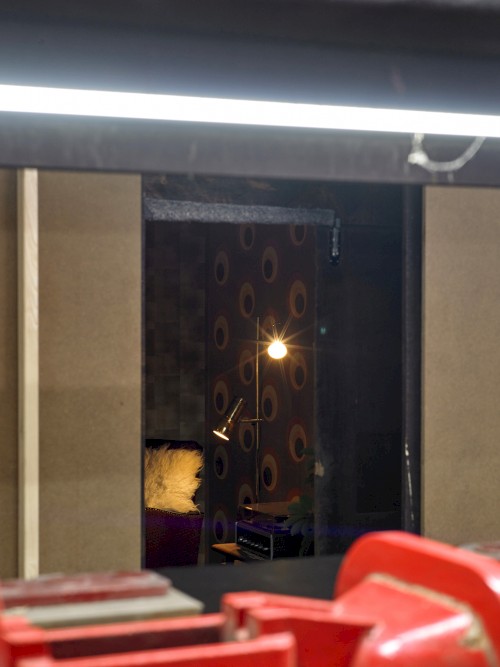
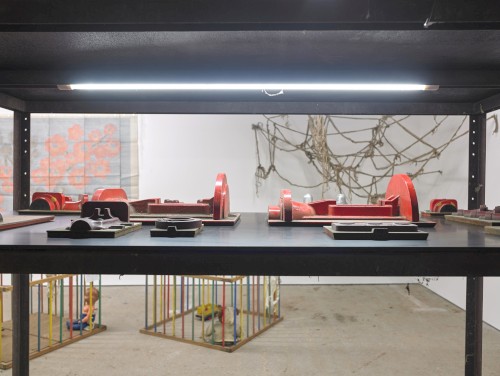
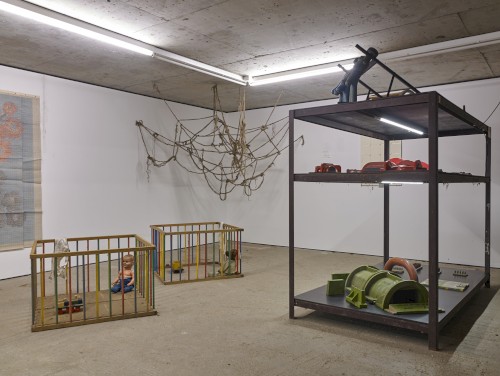
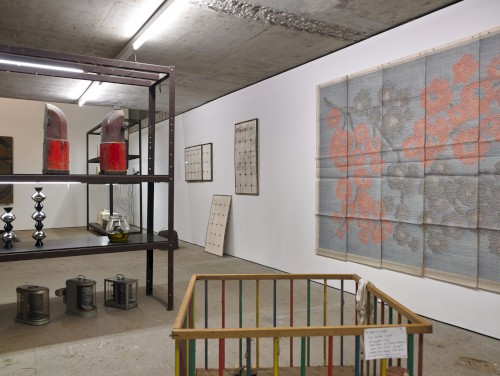
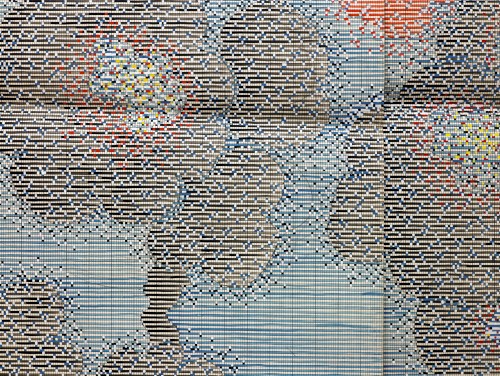
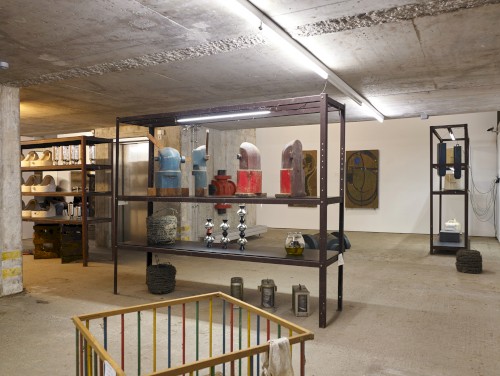
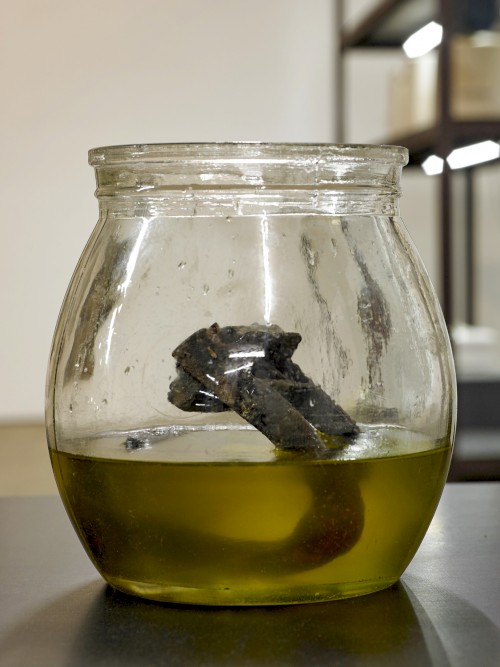

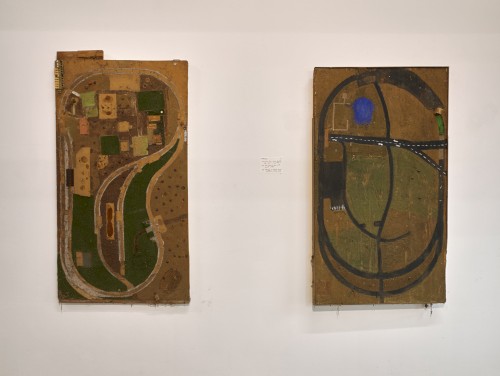
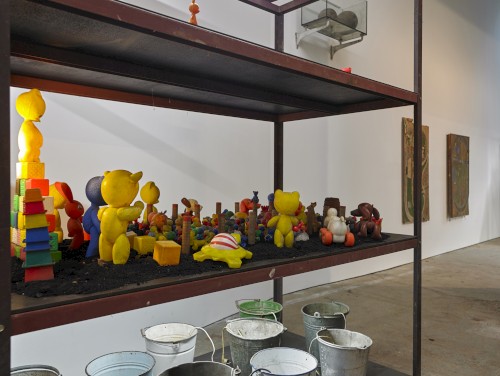
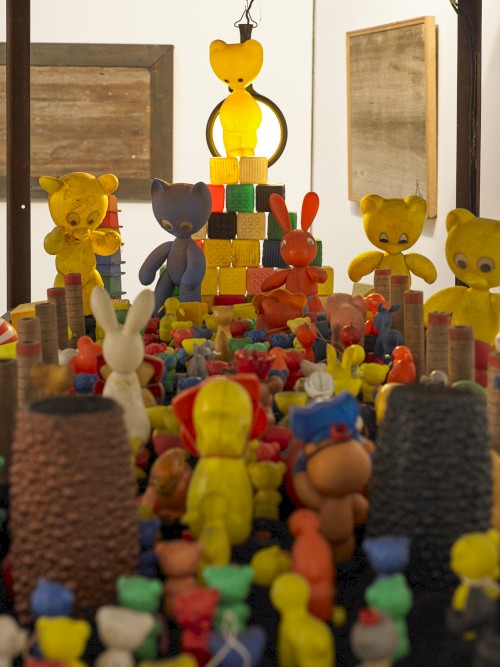
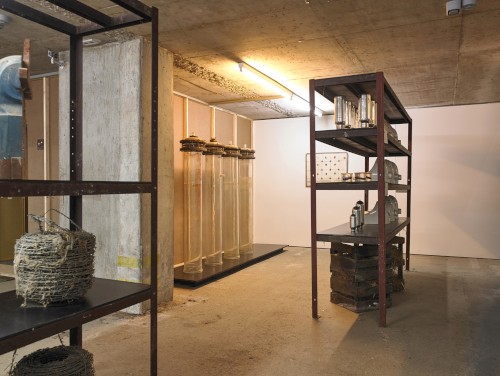
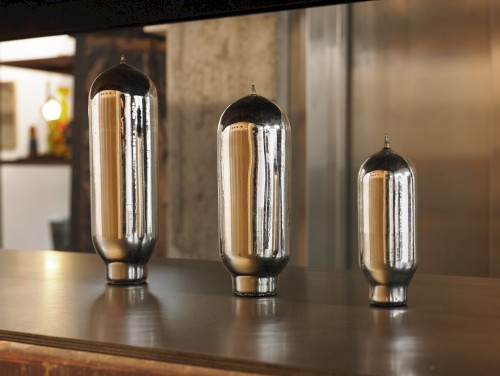
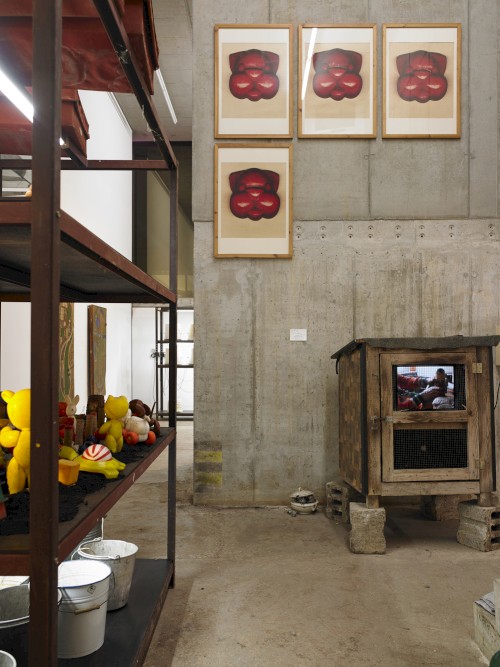
Exhibition walkthrough with Alexander Koch
- Current
- Upcoming
- 2025
- 2024
- 2023
- 2022
- 2021
- 2020
- 2019
- 2018
- 2017
- 2016
- 2015
- 2014
- 2013
- 2012
- 2011
- 2010
- 2009